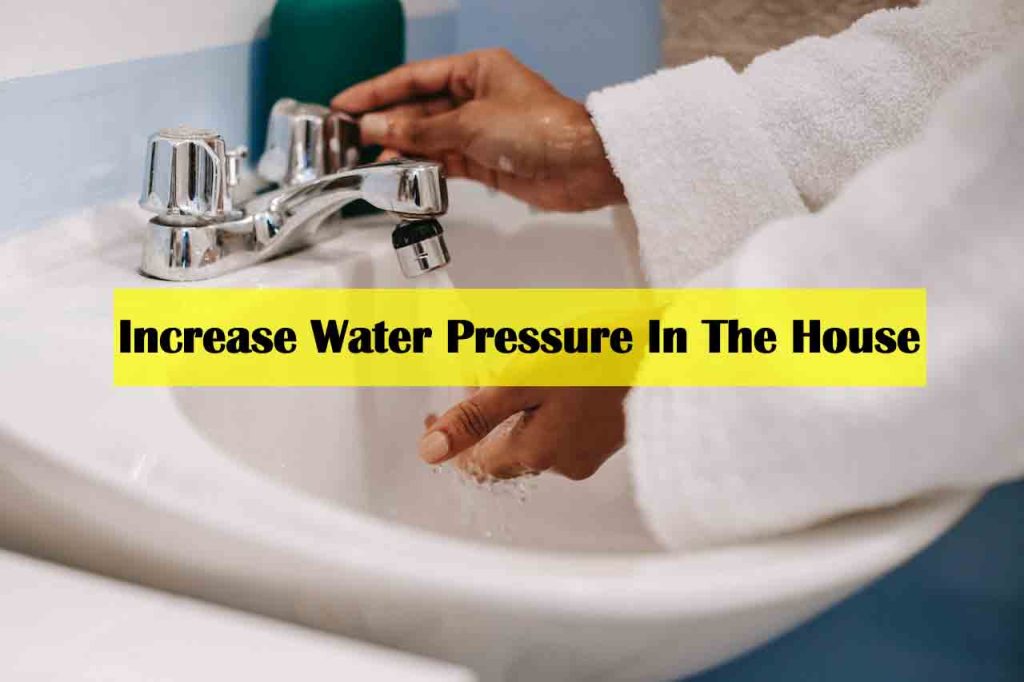Having low water pressure in your home can be a real hassle. It makes showering, washing dishes, and doing laundry difficult. If you have a well that supplies your water needs, there are some simple steps you can take to increase the water pressure in your house.
From checking for leaks to installing a pump system, these tips will help boost the flow of water throughout your home so you can enjoy better quality showers and more efficient dishwashing sessions.
Before getting started, feel free to click here if you’d like to get an insider look at low water pressure and wells.
Read on to learn how to increase the water pressure in the house with a well!
Deal with leaks
Homeowners should look for leaks if their water pressure is low because leaks can reduce the amount of water available for use in the home, resulting in inadequate pressure.
Leaks also waste a significant amount of water and money, as they can allow hundreds or even thousands of gallons of water to be lost every year. Furthermore, they can damage the pipes and other parts of your plumbing system over time, leading to costly repairs that could have been avoided had the leak been detected and dealt with earlier.
Finally, fixing existing leaks will ensure a steady flow of water at the right pressure throughout your home.
Clean the well and pump system
Cleaning the well and pump system is an important part of maintaining adequate water pressure in the house with a well.
A clogged well or pump can cause decreased water pressure, leading to poor performance of plumbing fixtures such as showers, faucets, and toilets.
Over time, sediment from the bottom of wells can travel up the pipes and accumulate in the pump, reducing its efficiency and causing decreased water pressure.
In addition, certain substances such as iron or manganese can also build up in the well over time, reducing flow rate and resulting in low water pressure.
Not only will cleaning the well and pump help to increase water pressure but it can also reduce wear-and-tear on the system by removing debris that could otherwise damage pumps and other components of the plumbing system.
Furthermore, regular cleaning of wells helps to prevent costly repairs down the line due to clogging or corrosion caused by mineral deposits. Finally, it’s important to have your wells professionally inspected on a yearly basis to ensure that they are free from any potential contaminants that could be putting you and your family at risk for health complications.
Install a pressure tank
If you have a well at your home, installing a pressure tank can help increase the water pressure. The pressure tank helps to keep water flowing through your pipes at the right amount of pressure. It also helps stop leaks which waste water and money. Additionally, it stops any damage to your plumbing from happening over time, saving you from expensive repairs.
Upgrade to a variable speed pump motor
Installing a variable speed pump motor can help make your water pressure stronger. It will keep the water flowing through your pipes at the right pressure and minimize the risk of water pressure-related issues occurring in the future.
Adjust the pressure switch settings
Adjusting the pressure switch settings can be a great way to increase water pressure in the house if you have a well. A pressure switch is an important part of the well system, which is designed to regulate the flow of water in your pipes. By adjusting the settings of this device, you can ensure that your home is supplied with adequate water pressure at all times.
The pressure switch controls how much pressure enters your home by telling the pump when to start and stop running. When set correctly, it can help prevent damage to your pipes caused by too much or too little water flow. It also helps conserve energy by automatically turning on and off as needed.
When adjusting the pressure switch settings, it’s important to consider factors such as the number of people living in your home, type of plumbing fixtures installed, and other individual requirements for adequate water flow. If set incorrectly, it could cause problems such as low water pressure or even an overabundance of it if not properly adjusted for your needs.
By making sure that your well’s pressure switch is set correctly and regularly checked for accuracy, you can improve your home’s water pressure and enjoy consistent performance from all plumbing fixtures throughout your house!
How to increase water pressure in the house with a well — Conclusion
Increasing water pressure in your home can be a daunting task, but with the right knowledge and tools, it’s certainly achievable. By understanding what causes low water pressure from wells and how to fix it, you can make sure that all of your faucets are running at an optimal level.
With regular maintenance such as checking for leaks or clogs in pipes and cleaning out sediment buildup every two years, you will also help maintain healthy water pressure levels throughout your household. Taking these precautions now will ensure that you have consistent access to clean drinking water while avoiding costly repairs down the road.
So if you’re looking to increase the flow of water coming into your house through a well system then follow these steps carefully!
